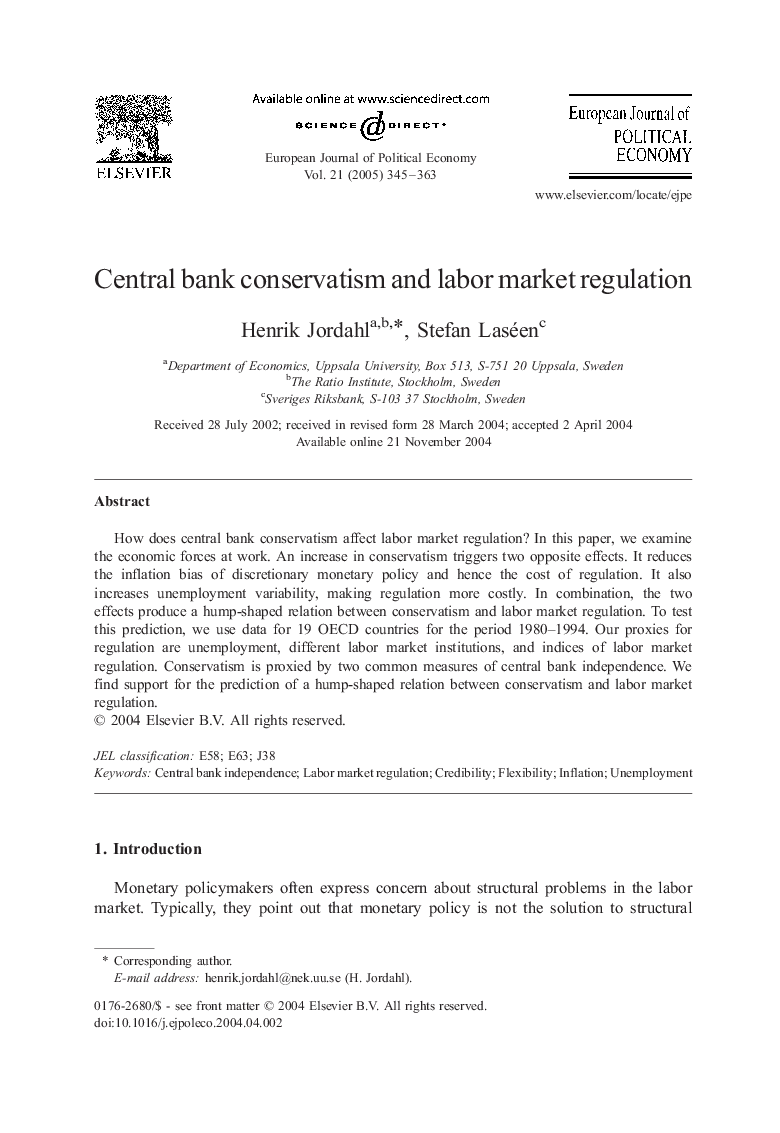| Article ID | Journal | Published Year | Pages | File Type |
|---|---|---|---|---|
| 9724185 | European Journal of Political Economy | 2005 | 19 Pages |
Abstract
How does central bank conservatism affect labor market regulation? In this paper, we examine the economic forces at work. An increase in conservatism triggers two opposite effects. It reduces the inflation bias of discretionary monetary policy and hence the cost of regulation. It also increases unemployment variability, making regulation more costly. In combination, the two effects produce a hump-shaped relation between conservatism and labor market regulation. To test this prediction, we use data for 19 OECD countries for the period 1980-1994. Our proxies for regulation are unemployment, different labor market institutions, and indices of labor market regulation. Conservatism is proxied by two common measures of central bank independence. We find support for the prediction of a hump-shaped relation between conservatism and labor market regulation.
Keywords
Related Topics
Social Sciences and Humanities
Economics, Econometrics and Finance
Economics and Econometrics
Authors
Henrik Jordahl, Stefan Laséen,
